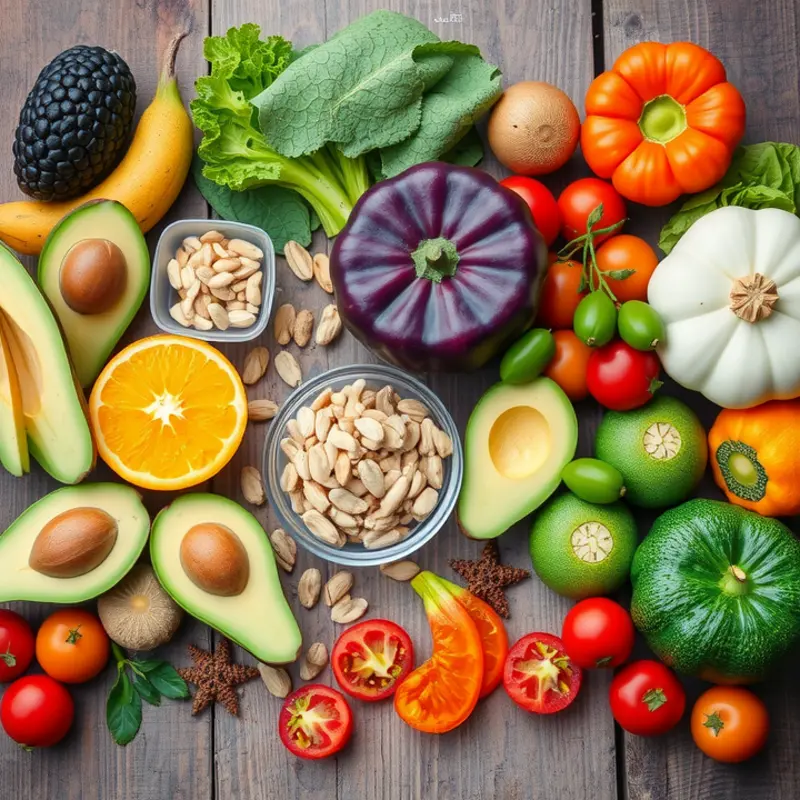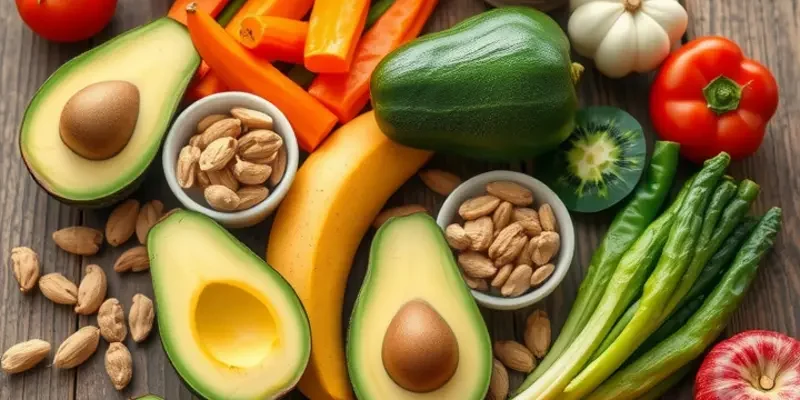Maximizing the body’s ability to absorb vitamins is crucial for maintaining health and wellness. Certain foods, when consumed together or on their own, can significantly enhance the uptake of essential nutrients. By understanding these food pairings and incorporating them into your daily diet, you can support your body’s natural processes, leading to improved energy levels, better immune function, and overall well-being. Let’s explore the superfoods and natural ingredients that can make a difference in how your body absorbs vitamins.
Power Pairings: Foods That Enhance Absorption

Maximizing nutrient absorption is a cornerstone of achieving optimal health. Foods can work in a symbiotic manner to enhance the absorption of essential vitamins. This chapter delves into strategic pairings that elevate the uptake of fat-soluble vitamins A, D, E, and K in particular.
Fat-soluble vitamins have a special requirement; their absorption is enhanced by the presence of dietary fats. For example, pairing leafy greens like spinach or kale with healthy fats such as avocado or nuts can significantly boost vitamin K absorption. Avocados and olive oil not only enhance flavor but are perfect fat sources to blend with vegetables abundant in these essential nutrients.
Vitamin A, known for its role in vision and immune function, is prevalent in foods like carrots and sweet potatoes. Consuming these foods with a fat source, like a dollop of olive oil or a handful of almonds, can amplify vitamin A absorption. A practical tip is to roast sweet potatoes with olive oil and a sprinkle of herbs, achieving both culinary delight and nutritional benefit.
When it comes to vitamin D, fatty fish such as salmon or mackerel are excellent sources. Vitamin D aids calcium absorption, which is pivotal for bone health. Pairing these fish with green vegetables not only introduces fiber but also furnishes additional vitamins and minerals, creating a robust nutrient synergy on your plate.
Vitamin E, an antioxidant powerhouse, can be found in nuts, seeds, and green leafy vegetables such as broccoli. Incorporate sunflower seeds into a salad topped with olive oil to thrive off each ingredient’s potential to enhance vitamin E uptake. Nuts like almonds or walnuts can serve as both a garnish and a nutritional enhancer.
The addition of fiber-rich foods further contributes to balanced nutrient absorption. Fiber helps regulate digestion and can optimize the gut environment to enhance nutrient uptake. Consider combining whole grains like quinoa or brown rice with dishes rich in fat-soluble vitamins to create a wholesome and balanced meal.
For those focused on practical application, here are a few suggestions:
- Breakfast: Begin with a spinach and feta omelet, cooked in olive oil, for a dose of vitamins A and K, along with healthy fats.
- Lunch: Create a kale salad with orange segments, toasted almonds, and avocado—a nutrient-rich dish promoting the absorption of multiple vitamins.
- Dinner: Embrace simplicity with grilled salmon served alongside roasted Brussels sprouts drizzled in balsamic vinegar and olive oil for a compelling blend of flavor and nutrition.
Making these power pairings a part of your regular diet requires little effort but yields enormous benefits. It’s a testament to how strategic food combinations can naturally amplify health and wellness. For further insights on integrating functional ingredients, explore this comprehensive guide to plant-based eating.
The Role of Superfoods in Nutrient Uptake

Superfoods have gained popularity for their dense nutrient profiles and potential to enhance overall health. Among these, chia seeds, kale, and bell peppers not only provide essential nutrients on their own but also improve the absorption of other valuable vitamins, acting as catalysts for better nutrient uptake.
Chia seeds, for instance, are an excellent source of omega-3 fatty acids and fiber, which play a pivotal role in the absorption of fat-soluble vitamins such as A, D, E, and K. The presence of healthy fats in chia seeds enhances the bioavailability of these vitamins, ensuring that your body can use them effectively. Incorporating chia seeds into your diet is simple. Add them to smoothies, use them as a topping for yogurt, or create chia seed puddings for a nutritious breakfast or snack.
Kale is renowned for its high vitamin K content, vital for bone health and proper calcium absorption. This leafy green also contains vitamin C, which can improve the absorption of non-heme iron—iron found in plant-based foods—thereby helping to prevent iron deficiency anemia. To best harness the benefits of kale, consider lightly steaming it to break down the tough fibers, making the nutrients more accessible. Adding kale to soups, salads, or even smoothies can introduce a nutrient boost to various meals effortlessly.
The vibrant bell peppers are rich in vitamin C, which plays a critical role in enhancing the absorption of iron from plant sources, similarly to kale. Additionally, the carotenoids in bell peppers can convert to vitamin A in the body, supporting vision and immune function. Enjoy bell peppers raw in salads, roasted as a colorful side dish, or stuffed for a hearty main course.
Pairing these superfoods with complementary ingredients can further enhance nutrient absorption. For example, combining vitamin C-rich foods like kale and bell peppers with iron-rich grains or legumes can lead to better iron uptake. Similarly, adding a small amount of healthy fat from chia seeds to salads or vegetable dishes can help in the absorption of fat-soluble vitamins they contain.
For those looking to explore more ingredient combinations that aid nutrient absorption, you might find practical ingredient batching helpful. This approach can streamline meal prep, making it easier to include a variety of superfoods in your diet consistently.
Including these superfoods in your daily meals not only enhances your nutrient intake but also supports the absorption of essential vitamins. Through thoughtful pairings and varied preparation methods, you can maximize the health benefits of these powerful ingredients, contributing to a balanced and nutrient-rich diet.
Final words
Enhancing vitamin absorption is an achievable goal with the right food choices. By incorporating specific pairings of foods that complement each other and focusing on nutrient-dense superfoods, you can significantly improve how your body utilizes the vitamins you consume. Whether it’s adding some avocado to your salads or incorporating kale into your smoothies, these simple strategies ensure you’re not just eating healthy, but also maximizing your health benefits. Prioritizing foods that promote absorption leads to better energy levels, stronger immunity, and an overall sense of well-being. Embrace these insights and take steps toward a healthier you.








